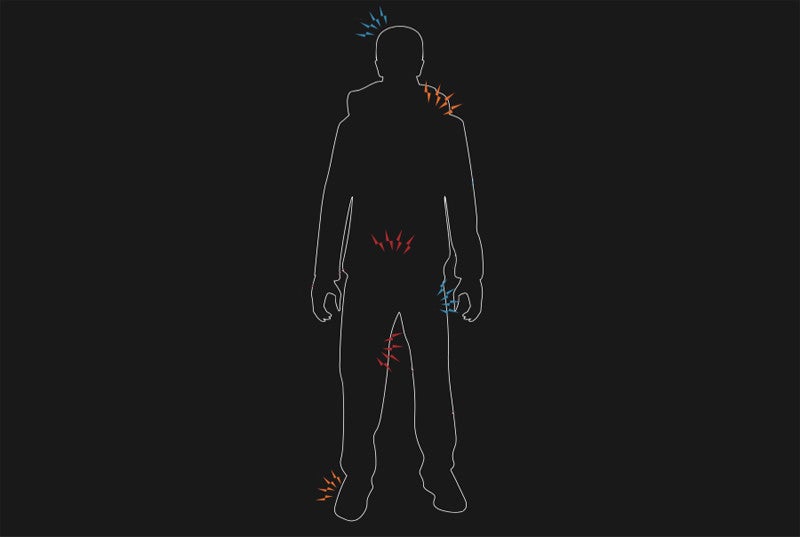How to Treat Injuries on a Long Hike

'Illustration by Giovanni Corrado Leone | Giovanni Corrado Leone'
Brain Bonking
Lack of Motivation: Write yourself a letter explaining why you’re hiking and what you hope to achieve. Pack it with you. Its motivational power is well worth the scant weight.
Loneliness: Chat with other hikers about more than trail issues, and keep family and friends up-to-date. “Friends keep you going. They are the people that give you hope, strength, and power,” says Steve “Huckleberry Finch” Bacon.
Boredom: Pack treats like books and fresh socks and gourmet candy in resupply boxes. “When you open a box full of exciting new food, it’s like opening a present rather than a bill,” says Liz “Snorkel” Thomas.
Tummy Troubles
ALWAYS . . .
Wash hands or use sanitizer.
Pace yourself at the buffet.
NEVER . . .
Put your hands in someone else’s snack bag (or let others put their hands in yours).
Shake a thru-hiker’s hand.
Blisters
Pop or not? If a blister is painful,pop it to reduce pressure.
1. Wash your hands and the area with soap.
2. Disinfect a needle or safety pin with fire or alcohol.
3. Make a small hole in the blister and massage fluid out.
4. Leave the blister otherwise intact, as it protects the new skin underneath.
5. Apply an antibiotic ointment, cover with tape or a Band-Aid, and watch for infection.
Pack-ne
Three steps to solving this painful and unsightly problem
1. Lighten your load.
2. Let your shirt dry out during breaks.
3. Keep your shirt clean (as possible).
I.T. Twinges
This fibrous tissue connecting the hips and knees is prone to trip-ending overuse injuries.
Stretch it. Lie on your back. Raise one leg up. Let it fall across your body (keeping it straight) until you feel it. Hold for 30 seconds. Switch legs.
Alleviate it. Use trekking poles to absorb impact, reducing leg strain.
Strengthen it. For a complete training program designed for long-trail fitness, check out our Thru-Hiking 101 course.
Chafing
Bathe with wet wipes, then apply hand sanitizer to dry excess moisture.
Use a lubricant to reduce friction. Vaseline, Body Glide, and Bag Balm work, but thru-hiker Laurel “Lollygag” Reissman swears by Vagisil. “It works so well for leg chafing. It instantly stops all the pain and makes it glidey so you don’t keep wearing away skin. And it smells nice.”
Wear clothes that eliminate skin-on-skin contact, such as tights.